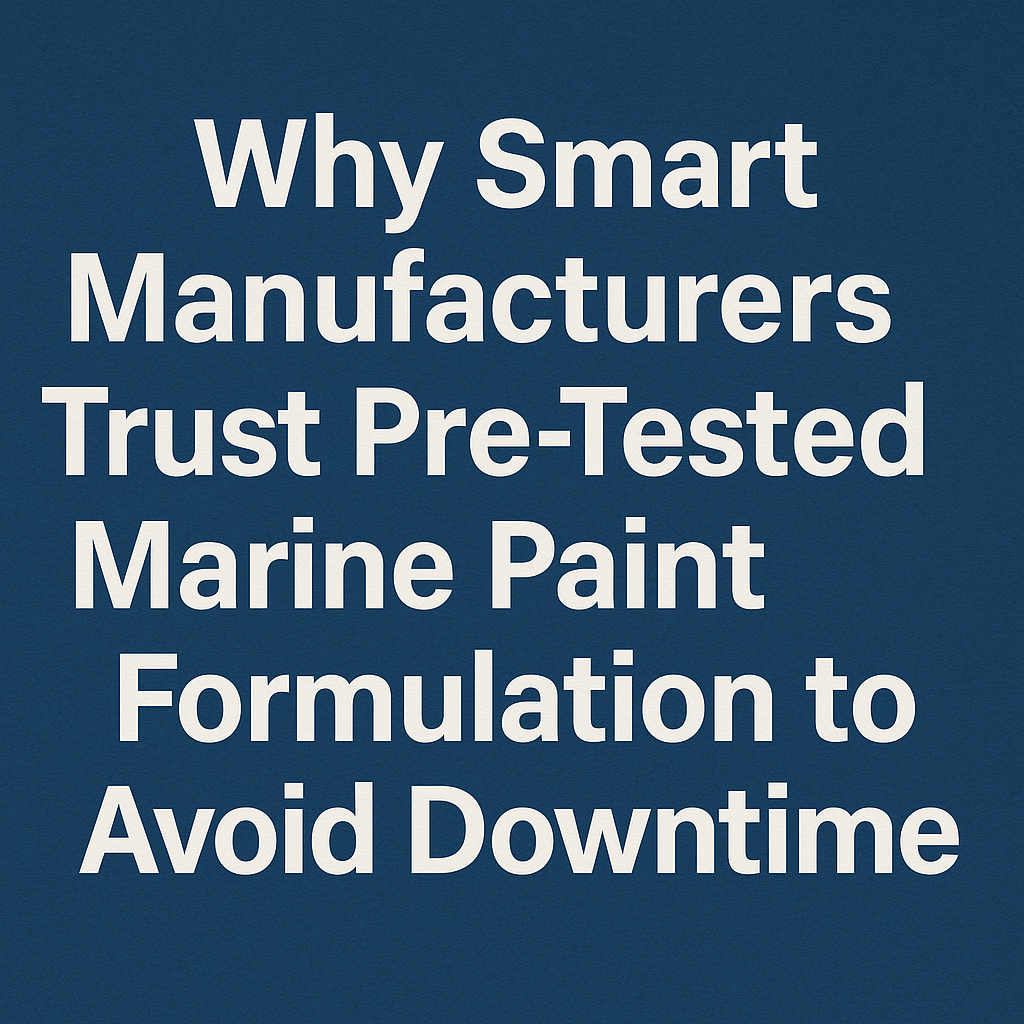When it comes to running anything in the marine industry—whether you’re building ships, maintaining offshore platforms, or repairing boat parts—one thing’s for sure: downtime is expensive. Every hour lost to repairs, recoating, or peeling paint costs money and slows down operations. That’s why experienced manufacturers aren’t rolling the dice with untested solutions anymore. They’re turning to pre-tested marine paint formulation—not because it’s trendy, but because it simply works.
Let’s break it all down and see why this shift toward pre-formulated marine coatings is more than just smart—it’s necessary.
Tested Once = Trusted Always
Imagine this: You’ve just painted a large vessel. A few weeks later, you start noticing bubbling, cracks, or rust breaking through. Now you’re back to square one—more labor, more materials, more wasted time. That’s what happens when the coating wasn’t truly tested in real conditions.
Pre-tested marine paint formulation takes the guesswork out of the equation. These are paint systems that have already proven themselves—often through harsh field trials or controlled testing that mimic the toughest sea environments.
Instead of mixing batches from scratch or experimenting with new blends, manufacturers now go for what’s already shown solid results. It’s like choosing a recipe that’s been tried a thousand times over, rather than inventing one mid-dinner party.
“It’s not about playing it safe—it’s about knowing what works when the stakes are high.”
— A Marine Coatings Technician at a Coastal Shipyard
Downtime Is the Real Enemy
A fancy new paint might sound cool on paper, but if it fails early, you’re looking at days—or even weeks—of costly downtime. Now multiply that across multiple vessels, or a whole fleet. It adds up fast.
Here’s a quick table to give you an idea:
| Scenario | With Pre-Tested Formulation | With Unproven Paint Mix |
|---|---|---|
| Coating failure rate | Low | High |
| Time spent on touch-ups | Minimal | Frequent |
| Labor hours for re-application | Reduced | Increased |
| Risk of corrosion or water intrusion | Very low | High |
| Overall operational delays | Rare | Common |
Smart manufacturers know that the real cost isn’t just in paint cans—it’s in idle time, stalled projects, and unexpected fixes. A formulation that holds up under pressure means smoother timelines and fewer disruptions.
Consistency Beats Complexity
Let’s be honest: when you’re dealing with marine gear, there’s already enough complexity—weather patterns, salt damage, fuel residues, maintenance schedules… the list goes on. So the last thing anyone wants is to throw in an unpredictable paint mix into the picture.
Pre-tested marine paint formulation offers consistency. It delivers the same performance every time, no matter the size of the project. That kind of reliability is a big deal when you’re managing teams, coordinating schedules, or dealing with tight turnaround times.
Also, many of these ready-to-use formulations are designed to be easy to apply, which saves extra time on training new crew or figuring out complex multi-layer systems. In short, it’s like having a dependable tool in your kit—one less thing to worry about.
Not Just About Color—It’s About Protection
Some folks still think paint is just there to make things look good. But in the marine world, paint is your first line of defense. It shields metal parts from salt, moisture, algae, and even impact.
Choosing the wrong coating could mean structural wear, hidden corrosion, and equipment that doesn’t last as long as it should. Pre-tested formulations are built for battle—they’ve been engineered to bond better, resist wear, and maintain their properties over time.
For example, some marine paint formulations are made to resist constant submersion, while others are better for above-water parts that face UV exposure. The key is that with pre-tested options, you don’t need to guess which formula suits which application—it’s already been figured out.
Peace of Mind in Every Coat
There’s something deeply reassuring about using a solution that’s already worked in real-world conditions. Whether you’re painting a tugboat or maintaining a marina dock, you want to know that once it’s done, it’ll stay that way.
With pre-tested marine paint formulation, you’re not gambling on the unknown. You’re using a system that’s been validated—often multiple times—in environments worse than yours. That peace of mind allows manufacturers to focus on other parts of their operations instead of worrying about reworks or failures.
Bonus Benefit: Less Waste, More Efficiency
Using pre-tested formulations also helps reduce material waste. When teams don’t have to reapply or adjust layers because something went wrong, you end up using less paint, spending less time, and throwing away fewer resources. In today’s world, where sustainability and efficiency are just as important as performance, that’s a massive win.
Final Thoughts
Marine work is tough enough already. The last thing any manufacturer wants is to deal with peeling paint, corroded surfaces, or constant maintenance cycles. That’s why the smart ones aren’t trying to reinvent the wheel. They’re sticking with pre-tested marine paint formulation—a solution that’s earned its stripes by actually performing under pressure.
It’s not about flashy marketing or buzzwords. It’s about saving time, avoiding costly rework, and delivering results that last. So the next time you’re standing at the edge of a ship hull with a roller in hand, remember: proven paint is one less problem to solve.
